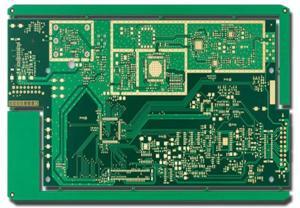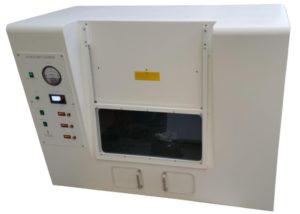
94V-0 Circuit Board – The Ultimate Guide
Circuit boards are the core of most electrical devices. Their complex circuitry facilitates complex electrical functions. These come in a varied type and vary between their application and durability. Some of them are designed to withstand some of the odds, namely extreme heat. The circuitry of such boards does not get impacted despite higher than usual levels of heat.
The 94V-0 circuit boards are circuit inscribed on Printed Circuit boards (PCBs) that have passed the UL 94V-0 flammability test.
[wpi_designer_button twin_id=2164]
What Are 94V-0 circuit boards?
Although the mechanisms of all types of circuit boards are very much the same, i.e., their underlying electronic working is the same; there are differences in terms of their applications. Some boards are designed to tolerate more heat and work more seamlessly.
The UL 94V-0 test is the heat tolerance test that certifies a circuit board as 94V-0.

The above image is of a 94V-0 printed circuit board.
What Is The “UL 94V-0 Flammability Test” of an RU 94v-0 circuit board?
Some electrical devices need to be extremely tough to resist many environmental odds. These devices can be military grade to meet the challenging conditions of a battlefield. These devices can also have direct exposure to extreme heat.
Circuit boards of such electrical devices that demand extra tolerance to heat have to be designed specifically. It has demanded that electrical and electronics engineers find more suitable materials and designs resistant to heat.
The electrical and electronic engineers have to design the PCBs that are resistant to heat and put them to test.
Many manufacturers came up with numerous iterations with titanic claims. There had to be an effective method that determines the framework of testing these PCBs‘ heat tolerance.
This leads to the invention of a test called a UL 94-0 Flammability test that approves the PCBs’ worthiness in its heat tolerance application.
The UL 94-0 Flammability test not only validates the claim of the PCB manufacturer about the PCB being tolerant to heat, but it also grades every PCB on the level and time of heat to which it can show no sign of stress. Therefore, the longer the PCB lasts under direct heat and the more the amount of heat it can resist, the more tolerant it is to heat.

The above image is of UL94 Flame Chamber—equipment meant for UL94-0 tests.
Awesome Properties of 94V-0 PCBs
- The 94V-0 PCBs offer the leash of life to the electronics by making them nearly indestructible in the fire. The PCBs are tested in fire and concluded not to catch fire in such demanding situations.
- The 94V-0 circuit boards are also favorable in accommodating standardized electronic components. They also let developers mount modern electronic components on them due to their standard nature despite their specific intention of high tolerance to heat.
- The 94V-0 circuit boards have more improved PCB designing allowing them to minimize the area accommodated. This allows the PCB engineers to produce large circuits by overlaying layers of conductive linings and insulating materials.
Also read:- Bill of materials in PCB Assembly
Why You Need 94V-0 Circuit Board?
This question applies to consumers, developers of electronics and electrical devices, and manufacturers alike.
- From the consumer point of view
While buying an electrical device, going for an inexpensive option may seem like the most viable choice for most consumers. Going for unbranded electronics, particularly those that are not of much significant use, namely bulbs, doorbells, power extension cords, and so on, seems like the most intuitive option due to their inexpensiveness.
However, if such an electrical device does not work up to its promised or implied standards, then consumers have to opt for more branded items that display the sign of authenticity.
Some of these electronics can produce a lot of heat, making it unbearable for the user. It may also keep the consumer alarmed about the extreme hotness of the electronic; he or she may fear fire likely to be kindled or safety hazard like injuries etc.
Besides, due to higher-than-normal heat levels, the electronics may misshapen, which can compromise their ability to work effectively and pose a risk to the customer.
Due to such an experience, the customers usually would resort to buying such electronics as makeshift utility items or completely giving up on their use. Such devices will lose their sales value in the market.
- From the electronics developer’s point of view
Many college students from the electrical engineering field and many independent electrical developers have to show their skills in evaluated projects to rate either their academic excellence or their hard professional skills.
A prudent electronic engineering pupil ought to ensure that the project is all-around optimized so that he or she gets good grades and marks. Similarly, an independent developer has to ensure that the electronics project meets all the standards and excels them in all ways, enabling them to reach a better position in a job or get selected in a more prestigious firm.
Choosing all the components, including the printed circuit boards that have to meet all the standards, can be the best way of ensuring the project’s acceptance. Some colleges or clients may run the electrical devices through an additional series of tests like heat tests to pass the projects with flying colors.
- From the manufacturer’s point of view
Electronics manufacturers make electrical devices and electronics that are gradable on several criteria. Some of them focus a lot on the products’ cost-effectiveness, whereas some offer more features. Similarly, some electronics manufacturers add other criteria that push the bar of their standards.
Developing electronics for regular consumers’ use may not need them to use specialized components and PCBs; however, offering specialized devices that defy the environment’s odds needs additional criteria like ruggedness.
For a long time now, many manufacturers have used the nano-coating technology on the PCB, small electrical components, and circuitry; this makes the electrical device resistant to water on the circuitry level. Using the state-of-the-art 94V-0 PCBs can make the devices tolerant to heat, which is equally destructive to the device in demanding situations.
Using such options can enable the manufacturer to introduce more products, add another dimension of the product line and increase their sales revenue. Besides, having such a raised standard can increase brand value, credibility, and recognition in the market.
Applications of 94V-0 Circuit Board
The 94V-0 printed circuit boards add a dimension of utility, i.e., tolerance to heat for the electronic devices. Manufacturers of electrical devices can make a range of electronics and appliances using the UL 94V-0 inflammability test.
The 94v 0 schematic PCBs are broadly used in the following situations.
- Professions that demand extra-strong electrical devices
The 94V-0 PCBs are in high demand in fields of professions that need extra-durable devices, especially battle-like situations, metallurgy, and so forth. These devices will not malfunction despite repeated or occasional exposure to heat.
- Professions requiring devices with uncompromised durability
Some professions that need to rely on electronic equipment and whose malfunction can be fatal or lead to serious repercussions need to use the 94V-0 PCBs. Hospitals, aeronautical devices, spacecraft, and so on need such highly durable PCBs.
- Professions that are prone to accidents
Professions where accidents are very likely to occur need using electronics and electrical equipment tolerant to many environmental elements, including heat. The UL 94V-0-tested PCBs will work seamlessly despite instances of accidents.
Huge boilers, furnaces, mining, metals molding factories, and so on are professions prone to accidents. The electronics used in their functioning should be able to withstand extreme heat to continue working ceaselessly despite any instance of an accident.
These were the commonest fields and professions that demand using extra tough devices and electrical equipment. Using the 94V-0 circuit boards can be the best way of meeting the heat tolerance standards.
In recent years, many manufacturers of electronic devices have introduced lines of products that offer extra toughness. These rugged devices need to be physically strong and resistant to water, heat, electricity, and much more. Therefore, the manufacturers have used the 94V-0 PCBs in their devices, making them more durable and appealing even to general customers.
Also read:- steps to decrease vibration in PCB
Call to Action
The 94V-0 printed circuit board is in use for a long time now. Initially, they were introduced as an additional, therefore, optional utility to the consumers; however, they are being produced by more and more manufacturers due to their practical use.
Due to their indispensable nature, many manufacturers have incorporated them in manufacturing devices that are resilient and resistive to heat and will not stop working despite the environment’s most destructible element.
With the introduction of military-grade and highly durable electronic gadgets with 94V-0 circuit boards, many manufacturers are now making devices that can stand firm in some of the most challenging environments, namely battlefields, mining, metal-molding, etc.
The invention of the UL 94V-0 inflammability test has also made it possible to manufacture electronic devices that will work seamlessly in operations that demand uncompromised reliability.
The 94V-0 PCB-equipped devices are also useful in accident-prone professions, offering unrestricted performance and continued operations in such situations.
[wpi_designer_button twin_id=2164]

